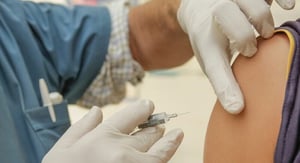Aston Martin Lagonda Global Holdings plc (LON:AML) have today provided first quarter results for the three months to 31 March 2020.
Successful £536m Capital Raise; significant dealer de-stock despite impact of COVID-19; DBX deliveries on track for Summer 2020
| £m | Q1 2020 | Q1 2019 | % change |
| Total wholesale volumes1 | 578 | 1,057 | (45%) |
| Revenue | 78.6 | 196.0 | (60%) |
| Adjusted EBITDA2 | (46.9) | 28.3 | (n.m.) |
| Adjusted operating loss2 | (75.8) | (2.2) | (n.m.) |
| Operating loss | (76.7) | (3.2) | (n.m.) |
| Loss before tax | (118.9) | (17.3) | (n.m.) |
| Net debt 2,3 | 956.14 | 701.7 |
1 Number of vehicles including specials; 2 For definition of alternative performance measures please see Appendix page 8; 3 Includes lease liabilities (Q1 2020: £109m; Q1 2019: £112m); 4 Including rights issue proceeds, proforma net debt £614m
Lawrence Stroll, Aston Martin Lagonda Executive Chairman said:
“While in the short-term, as anticipated, we will have some difficulties due to the onset of COVID-19, having been in the business for a few weeks now I am even more enthusiastic and confident in the multi-year plan that we have set out to bring new and exciting products to market to drive demand and build the Aston Martin brand.
My immediate priority is to rebalance supply and demand, reducing dealer stock. Although nearly all our dealers are compromised and our factories were closed, we are focused on achieving results and delivering our plan. We have made very good progress very quickly, with dealer inventory down 428 units in just one quarter, more than double the level achieved in the whole of 2019.
With St Athan reopened safely last week, I am extremely pleased that DBX remains on track for deliveries in the summer and has a strong order book behind it extending into 2021. Based on these successful initial orders for DBX, we plan to unveil future derivatives starting from 2021. Development of our range of mid-engined cars, descended from the era defining Aston Martin Valkyrie hypercar, continues along with refreshes of our core sports car models.
From next year we will also have the great benefit of our own highly competitive Works Formula One team – giving us a significant global marketing platform to further strengthen our Brand and engage with our customers and partners across the world.
We will progressively re-energise our marketing initiatives and programmes in our major markets as they emerge from the first phases of the COVID-19 environment. We are focused on building on the Company’s inherent strengths, its Brand, its engineering prowess, and the skills of its people to enable Aston Martin to become one of the pre-eminent luxury car brands in the world.”
Dr Andy Palmer, Aston Martin Lagonda President and Group CEO said:
“During this difficult time our primary concern remains the health and safety of our employees and their families, our business partners, customers, and the local communities where we operate. I am particularly proud of the hard work of our people in producing personal protective equipment for frontline NHS workers to whom we all owe an enormous debt of gratitude.
COVID-19 and the resulting global economic shutdown has had a material impact on our performance this quarter but during this unprecedented time we completed a £536m capital raise and continued to implement our exciting strategy to reset and safeguard the long-term future of the business. Part of the reset includes reducing our global dealer inventory to a luxury norm to rebalance supply and demand, to build resilience and profitability for the future. We have made significant progress on this with dealer inventory reducing by 428 units compared to the start of the year.
Although there is still much uncertainty around the duration of the pandemic and the shape of the economic recovery, we remain focused on and excited about our plans. On 5 May, we reopened our St Athan manufacturing facility, which started production of DBX bodies yesterday and remains on course to start full production in the next few weeks, with deliveries starting in the summer. The order book continues to build and extends into 2021. We also have a strong order book for the recently launched Vantage Roadster.”
Key Results – three months to 31 March 2020
· Revenue declined to £79m as COVID-19 impacted dealer demand, amplifying the impact of strategic decision to lower wholesales to reduce dealer inventory towards a luxury norm; and, reflected lower average selling price (ASP)
– Total and core wholesale ASP of £98k impacted by customer and retail financing support for retail sales in quarter as dealer inventory reduces, as well as core product and geographic mix headwinds, compounded by no Specials as planned (Q1 2019: total £160k, core £149k)
· Core retail[1] sales down 31% year-on-year but ahead of wholesales in unit terms as COVID-19 impacted customer demand and the Company destocked dealers; dealer inventories down 428 units since December 2019 (FY 2019: 190 decrease)
· Core wholesales[2] were down 44%, as a result of the strategic destocking and the onset of COVID-19; total down 45%, with no Specials as planned (Q1 2019: 32 Specials)
– APAC (-74%), Americas (-57%), EMEA (-30%) and UK (-3%); China down 86% with no wholesales in January and February, as planned to re-balance dealer inventories
· Operating loss increased year-on-year principally due to the revenue decline, partially offset by some re-phasing of marketing costs; FX was a £7m headwind to operating profit
· Pre-rights issue proceeds, net debt was £956m[3] and adjusted net leverage 16.2x last 12 months (LTM) adjusted EBITDA (December 2019: £988m; March 2019: £702m); Closing cash was £172m
– Working capital inflow included substantial receivables unwind (£63m) offset by increased inventory (£35m) principally to support DBX and Aston Martin Valkyrie build
– Capital expenditure of £85m (Q1 2019: £78m) was lower than guidance due to some rephasing; continued investment primarily in DBX, Aston Martin Valkyrie and St Athan
· Successfully completed equity capital raise of £536m; placing of 25% of equity to Lawrence Stroll-led consortium for £171m (completed 31 March) and rights issue raising £365m[4] (completed 20 April)
– Including equity raise proceeds, proforma net debt as at 31 March was £614m3 with adjusted net leverage of 10.4x LTM adjusted EBITDA
Operational update
· The Company took action to manage proactively across its supply chain and business more broadly through the onset of COVID-19, including temporarily suspending production at its UK manufacturing facilities from 25 March
– St Athan reopened on 5 May following public health guidelines; the Company worked closely with suppliers to secure supply aligned to this timing; DBX start of full production scheduled in the next few weeks and operations at Gaydon planned to resume later
– The Company has developed and manufactured much needed personal protective equipment (PPE) and is delivering a supply of scrubs and gowns to support the NHS and has also provided vehicle repair and servicing for NHS workers cars
· Up to 93% of the dealer network was closed or running with limited capacity at points during the quarter
– Currently all 18 dealers in China have re-opened and more than 15% of dealers are fully open globally
· In addition to re-phasing costs and investment
– Majority of employees are furloughed, and the Company is receiving support through the Government’s ‘Job Retention Scheme’
– Board and senior management have voluntarily waived a proportion of their remuneration for three months from 1 April
· All Aston Martin cars will be built to fulfil order demand only
– DBX is on track for Summer 2020 delivery with retail orders continuing to grow and now extending into 2021; derivatives to be unveiled from 2021
– Vantage relaunched at virtual Geneva Motor Show in March, including the unveil of the new Vantage Roadster derivative. Aston Martin also introduced the Company’s iconic ‘vane’ grille as an option, available on both Coupe and Roadster, as an alternative to the track-inspired ‘hunter’ grille featured on the Coupe from its launch in 2018
– Aston Martin Valkyrie deliveries now planned to commence in late H2 as closure of test facilities impacted development schedule
– 2021 V12 Speedster Q by Aston Martin special edition unveiled to acclaim in March with a building orderbook
Outlook
· 2020 is the year in which the business is being reset to enable it to operate as a true luxury company. This process, which involves reducing core wholesales to rebalance supply to demand is absolutely necessary for the long-term performance of the Company
· The uncertainty surrounding the duration and impact of the COVID-19 pandemic on the global economy, makes it not possible to provide a clear view on the full year outlook and the Company withdraws the previous guidance for the year
· The Company is proceeding on the assumption that trading remains challenging and is therefore implementing measures to take further actions on operating costs and focus on controlling cash
· Given the ongoing uncertainties, as is prudent, the Company continues to review all future funding and refinancing options to increase liquidity
Q1 REVIEW
The ongoing COVID-19 pandemic has had a substantial impact on Aston Martin Lagonda’s business, increasing the uncertainty and risks to the financial performance of the Company.
The Company has focused on managing through this challenging period, completing the capital raise and executing its reset strategy, seeking to rebalance supply to demand for core models to restore pricing power and strengthen brand positioning. Year-to-date dealer inventories decreased by 428 units, significantly ahead of the 190-unit de-stock in FY 2019.
The virus has impacted customer demand globally with all major markets having undergone shutdowns to control its spread. The Company continues to take action, managing proactively across its supply chain and business more broadly.
Income statement
First quarter revenues declined 60% year-on-year to £79m (Q1 2019: £196m). The advance of COVID-19 impacted dealer demand for cars which added to the planned wholesales unit decline as the Company implemented its strategic plan to decrease dealer inventory towards a luxury norm. In addition, continued retail finance support, lower China mix and greater Vantage mix, along with no Specials, as planned, weighed on Average Selling Price (ASP).
Total wholesales were 578 units, down 45% with no Specials compared with 32 units in Q1 2019. All Specials in 2020 are planned for H2 delivery. Core wholesales were down 44%, with all regions negatively impacted by the virus to varying degrees. China was the weakest market (-86%) with no wholesales in January and February (as reported in March) as planned in order to re-balance dealer inventory. The UK (-3%) was the best performing market as the region started the year with comparatively lower dealer inventory levels allowing more pull through for wholesales.
With core retail sales down 31% but ahead of wholesales in unit terms, dealer inventories decreased by 428 units year-to-date, with Vantage approaching half of the de-stock.
With no Specials in Q1, total and core ASP was £98k (Q1 2019 total: £160k; Q1 2019 core: £149k). The most significant factor weighing on ASP was the continuation of customer and retail financing support to drive retail sales in pursuit of lowering dealer stock to luxury norm levels. Negative geographic mix, with lower China weighting and a shift towards Vantage caused a further headwind to core ASP.
The operating loss of £77m reflected the flow through of the revenue reduction to gross margin, with a partial offset from operating costs. In addition, exchange rate movements resulted in a £7m foreign exchange headwind.
Total adjusted operating expenses were down 6% to £80m (2019: £85m), reflecting lower volume related costs and some fixed marketing efficiencies, with a shift towards digitally led campaigns, and re-phased spend, including F1 TM given the delay to some of the seasons’ races. Depreciation and Amortisation was slightly lower year-on-year at £29m (Q1 2019: £31m) with no Specials in the quarter. Adjusted EBITDA was (£47m) (Q1 2019: £28m). An adjusting charge of £1m related to pre-IPO incentive and redundancy costs.
Net financing costs of £42m were up from £14m in the prior year reflecting higher interest payments year-on-year given the $340m of new notes issued during 2019 including an FX headwind (£17m) given the US dollar denomination of the notes. The loss before tax was £119m (Q1 2019: £17m loss).
The effective tax rate for the quarter was 15%, lower than the prior year principally due to a corporate interest rate restriction (relating to the tax treatment of interest costs) (Q1 2019: 21%).
After the placing of 76m shares, the number of ordinary shares at 31 March was 304m. Adjusting for the bonus elements of the rights issue, the total shares outstanding as at 31 March 2020 was 946m giving an adjusted EPS of (11.5)p (EPS (11.6)p)[5]. The number of shares outstanding has since increased to 1,520m after the rights issue on 20 April 2020.
Cash flow and net debt
Net cash outflow from operating activities was £4m, driven primarily by the operating loss of £77m. A working capital inflow of £48m most significantly reflected a £63m receivables inflow due to the unwind of the Q4 2019 overhang (c.£35m) and lower wholesales year-on-year. An inventory outflow of £35m included the build-up of parts supply for DBX, Vantage Roadster, Valkyrie and other Specials due to deliver in the second half. The deposit balance increased slightly due to V12 Speedster.
Capital expenditure was £85m and focused on St Athan, DBX and Aston Martin Valkyrie. This was lower than guidance reflecting some re-phasing of investment, with spend still expected to be more H1 weighted. Cash at 31 March 2020 was £172m (31 December 2019: £108m) reflecting the £171m[6] received from the Placing which completed on 31 March.
Pre-rights issue proceeds, net debt of £956m[7] was down from £988m at 31 December 2019, primarily due to the higher cash balance. Adjusted leverage[8] of 16.2x LTM adjusted EBITDA was up from 7.4x at 31 December 2019 reflecting a lower LTM adjusted EBITDA.
The combined capital raise of £536m, completed post quarter-end with the £365m rights issue completed on 20 April. Proforma net debt, at 31 March including the full equity raise as would have been £614m with a leverage of 10.4x LTM adjusted EBITDA.
Wholesale units by region
| Q1 2020 | Q1 2019 | Change | |
| UK | 229 | 235 | (3%) |
| Americas | 107 | 250 | (57%) |
| EMEA ex. UK | 148 | 211 | (30%) |
| APAC | 94 | 361 | (74%) |
| Total | 578 | 1,057 | (45%) |
Note: Includes Specials
Summary Income Statement
| £m | Q1 2020 | Q1 2019 |
| Revenue | 78.6 | 196.0 |
| Cost of sales | (74.5) | (113.4) |
| Gross profit | 4.1 | 82.6 |
| Gross margin | 5.2% | 42.1% |
| Operating expenses1 | (79.9) | (84.8) |
| of which depreciation & amortisation | (28.9) | (30.5) |
| Adj. operating loss | (75.8) | (2.2) |
| Adj. operating profit margin | (96.4%) | (1.1%) |
| Adjusting operating items | (0.9) | (1.0) |
| Operating loss | (76.7) | (3.2) |
| Net financing expense | (42.2) | (14.1) |
| Loss before tax | (118.9) | (17.3) |
| Taxation | 17.8 | 3.4 |
| Loss after tax | (101.1) | (13.9) |
| Adj. EBITDA | (46.9) | 28.3 |
| Adj. EBITDA margin | (59.7%) | 14.4% |
| Adj. loss before tax | (118.0) | (16.3) |
| EPS (pence) 2 | (11.6) | (1.6) |
| Adj. EPS (pence) 2 | (11.5) | (1.5) |
1 Excludes adjusting items 2 Under IAS 33 the current and comparative periods number of shares has been restated to reflect the bonus element of the rights issue which took place on 20th April, this is classified as an adjusting post balance sheet event and all periods have been restated to reflect this bonus element
Summary Cash Flow1
| £m | Q1 2020 | Q1 2019 |
| Cash generated from operating activities | (4.1) | 46.6 |
| Cash used in investing activities | (84.2) | (76.3) |
| Cash inflow from financing activities | 156.4 | 14.6 |
| Effect of exchange rates on cash and cash equivalents | (4.3) | (1.7) |
| Net cash inflow/(outflow) | 63.8 | (16.8) |
| Cash balance | 171.7 | 127.8 |
1 Excludes £9m of cash not available for short term use
Net Debt Overview
| £m | 31-Mar-20 | 31-Dec-19 | 31-Mar-19 |
| Senior Secured Notes | 871.2 | 829.9 | 584.3 |
| Unsecured Loans | – | – | 1.4 |
| Inventory Financing | 39.7 | 38.9 | – |
| Bank loans and overdrafts | 116.5 | 124.0 | 131.7 |
| Lease Liabilities (IFRS 16) | 109.4 | 111.4 | 112.1 |
| Gross Debt | 1,136.8 | 1,104.2 | 829.5 |
| Cash balance | 171.7 | 107.9 | 127.8 |
| Cash not available for short term use | 9.0 | 8.7 | – |
| Net debt1 | 956.12 | 987.6 | 701.7 |
| Adj. leverage | 16.2x2 | 7.4x | 3.1x |
1 Includes lease liabilities 2 Including equity raise proceeds, proforma net debt £614m with adjusted net leverage of 10.4x
Summary Balance Sheet
| £m | 31-Mar-20 | 31-Dec-19 | 31-Mar-19 |
| Non-current assets | 1,783.6 | 1,663.6 | 1,554.3 |
| Current assets | 602.8 | 567.5 | 522.4 |
| Total assets | 2,386.4 | 2,231.1 | 2,076.7 |
| Current liabilities | 930.0 | 858.2 | 844.4 |
| Non-current liabilities | 1,055.2 | 1,014.0 | 792.8 |
| Total liabilities | 1,985.2 | 1,872.2 | 1,637.2 |
| Total equity | 401.2 | 358.9 | 439.5 |
Alternative performance measures
In the reporting of financial information, the Directors have adopted various Alternative Performance Measures (“APMs”). APMs should be considered in addition to IFRS measurements. The Directors believe that these APMs assist in providing useful information on the underlying performance of the Group, enhance the comparability of information between reporting periods, and are used internally by the Directors to measure the Group’s performance.
· Adjusted EBT is the loss before income tax and adjusting items
· Adjusted EBIT is loss from operating activities before adjusting items
· Adjusted EBITDA removes depreciation, loss/(profit) on sale of fixed assets and amortisation from adjusted EBIT
· Net Debt is current and non-current borrowings in addition to inventory financing arrangements, lease liabilities recognised following the adoption of IFRS 16, less cash and cash equivalents, cash held not available for short-term use as shown in the Consolidated Statement of Financial Position (the definition of this APM has been updated since 31 December 2019)
· Adjusted leverage is represented by the ratio of Net Debt, to the last 12 months adjusted EBITDA
(the definition of this APM has been updated since 31 December 2019)
[1] Dealer sales to customers, excluding Specials
[2] Sales to dealers, excluding Specials
[3] Includes lease liabilities of £109m, following the adoption of IFRS 16 in the prior year, net debt now includes these lease liabilities
[4] Gross amount, excluding fees
[5] Original shares outstanding: 228.0m; after restating the bonus element of the rights issue under IAS 33, the shares outstanding in the comparative period is 870.4m; Weighted average shares outstanding for the 3 month period ended 31 March 2020 including the restatement for the rights issue bonus element: 871.3m; shares outstanding at 31 March 2020 including the restatement for the rights issue bonus elements: 946.4m
[6] £75.5m short-term working capital facility provided by Yew Tree during Q1 2020 was refunded after the Placing
[7] Net debt includes £109m lease liabilities (Q4 2019: £111m)
[8] LTM adjusted leverage includes the £109m lease liability




































